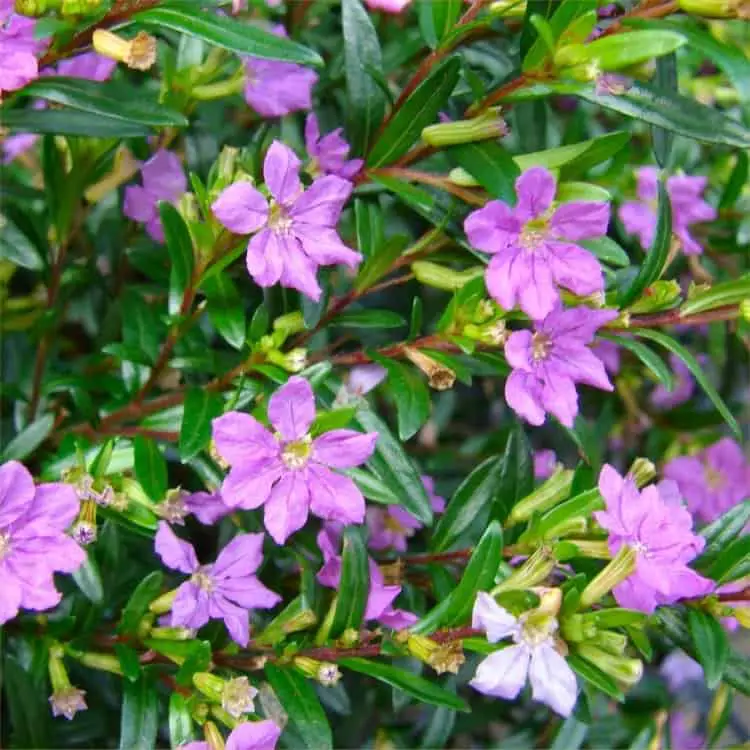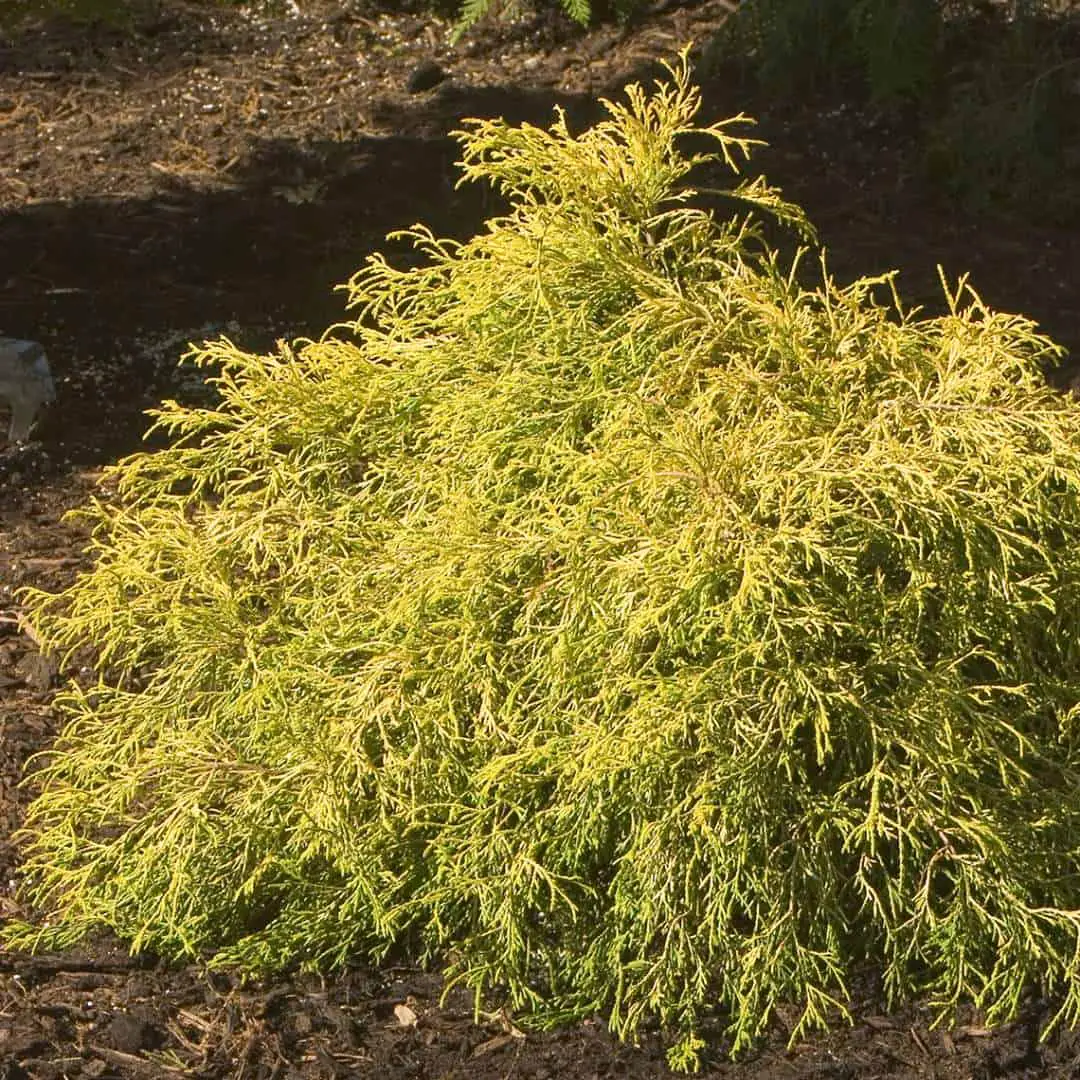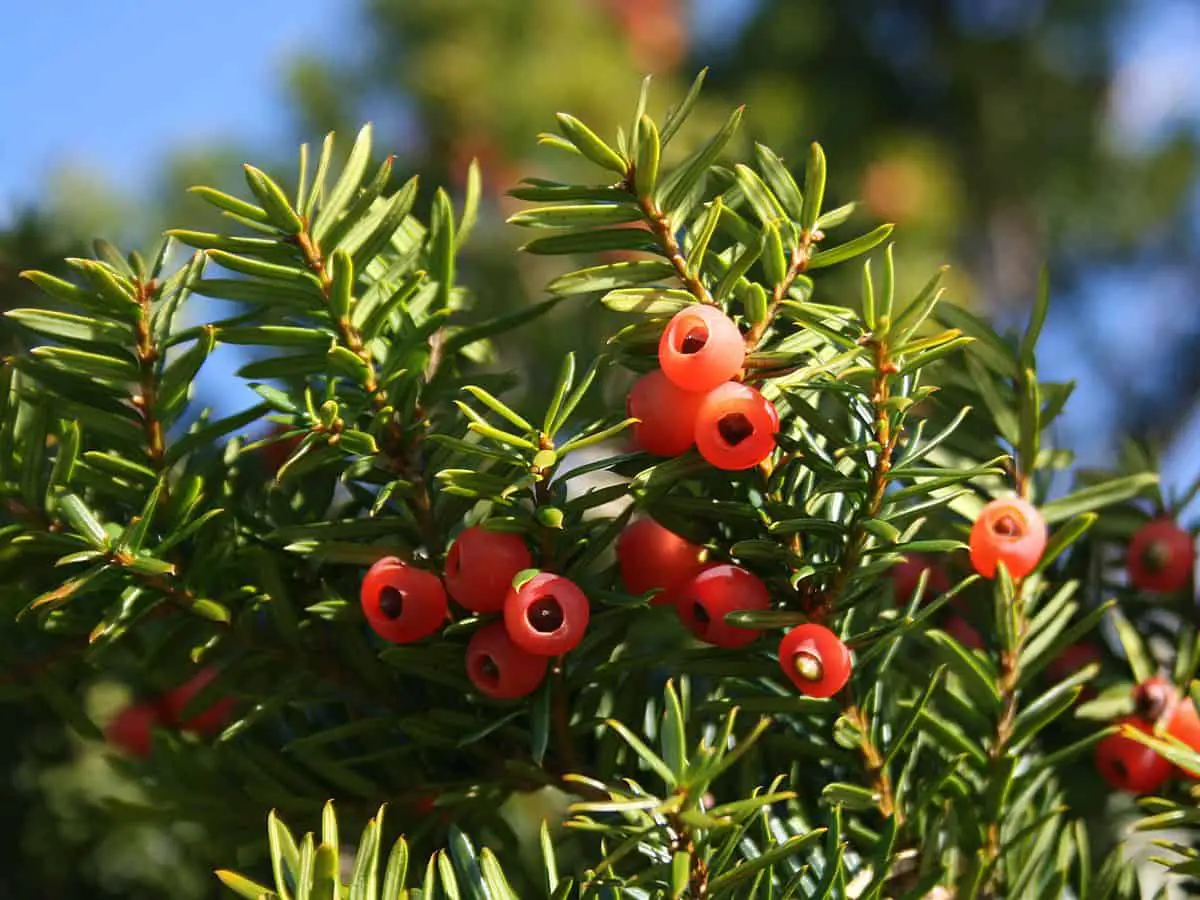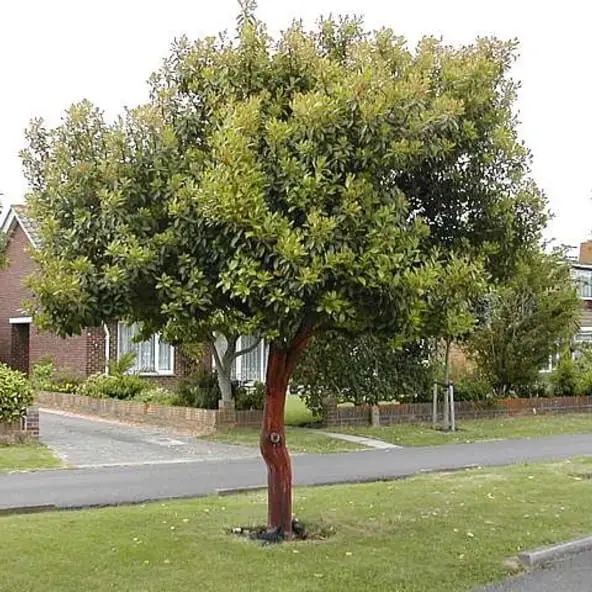Plerandra elegantissima, also known as the Spider Aralia, Threadleaf Aralia, and False Aralia is a species of flowering plants from the Araliaceae family, native to the southwest Pacific Ocean region. The False Aralia plants are grown for their beautiful foliage. They have beautiful dark green, narrow, elongated saw-tooth edged leaves. In the early days, the leaves have a coppery shade, but as the plant matures, these leaves become more and more green.
False Aralia plants can be 8–15 m (26–49 ft) tall and 2 meters wide if provided with enough space. They are evergreen and grow like a shrub. The central stem divides into many branches. The leaves of False Aralia plants are very thin as well. Flowers mostly appear during the autumn; they have a pale green color and grow in clusters.
These small flower clusters turn into small fruit after the end of autumn. The False Aralia plants grow very slowly and take a very long time to reach their potential height. They grow very well in indoor environments and with proper care, you can also grow them outdoors as well.

Growing Conditions and Requirements
The False Aralia plants tend to grow very well in the bright environment, if it is possible, keep them under direct sunlight for 4 to 6 hours a day. The amount of light they receive determines the foliage color of the plants. Change in the light changes the foliage color of the plant as well.
The False Aralia plants need a moist environment, they like the proper and regular supply and adequate amount of water. They prefer to be grown in well-draining soil. If the soil is trapping any water, it can lead to several problems for the roots of the plant including the root rot.
For the faster growth of False Aralia plants, you can use the required fertilizers. Conduct a soil test and check if there is any nutrient deficiency in the soil and then feed an appropriate fertilizer once or twice every 40 days.
Below are the details about the growing conditions and requirements:
Water Requirements
The False Aralia plants tend to show fast growth if they are properly watered. Proper and regular watering helps the plant. They do not like dry conditions. In dry seasons try watering them more frequently otherwise the foliage color of the plant will change. Watering requirements of the False Aralia plants change depending upon the situations. Below are the details about these situations and how to water your plants based on these scenarios.
● After sowing the seeds or planting them in a pot. Give them some watering and try to keep the soil moist unless you see the seedlings appear. Once the seedlings appear, provide them water once every two days.
● After a few days when the seedlings grow new leaves and grow a little stem and reach a height of almost 5 to 6 inches, you can change the watering frequency. You can water them now once every third day. Keep watering them once every third day for a few months.
● Once the plant reaches 12 months or more in age and gets a significant height, you can change the watering from every third day to every fourth day. Now watering will depend more on the season and weather. So, you can take measures according to these factors.
● In areas where temperatures get very high, you will have to water them more frequently, as in these areas soil quickly becomes dry, if it is well-draining and is not trapping any water. In such a soil you will have to water them very often. You can water them every fourth or fifth day.
● In the cold area, where temperatures mostly remain below 5 C, you can water them less often as in such areas soil takes more time to drain water and become dry. In such areas, you can water your plants once every 6th or 7th day.
● Watering also depends on the weather, you will have to water them too often during the summer and spring while in the winter and autumn, you can water them less frequently.
You can also use the dryness as a scale to look if your plant needs water or not. You need to dip your finger in the soil and check if the first layer is showing any signs of moisture, if there is some moisture you can wait for another day to water them. You can also create a watering schedule to water your False Aralia plants, this must be based on the soil type, area, temperature, and seasonal factor.
Lighting Requirements
The False Aralia plants thrive under the full sun. They need direct or indirect sunlight and a bright environment for almost all day long. If it is possible then keep them in a place where they get enough sunlight or brightness. The amount of sunlight they receive impacts the foliage color of the plant. If they are grown in bright light, they tend to grow very dark green leaves while the low amount of sunlight or brightness can lead to the pale-yellow color in leaves.
You can try and plant them in a way that they receive enough light when needed, and they also get the required shade during the hot time of the day. If the plant is kept under the full sunlight all day long, it can also impact the foliage color as well.
To grow them indoors, you must keep them in a bright place. You can place them in a window that is facing east. If they are not receiving the required amount of light, they will not grow properly. It is best to keep them in a partially shady place, where they receive direct or indirect light for almost 6 hours a day.
Temperature Requirements
The False Aralia plant prefers a slightly hot environment to grow. They thrive when the temperature is above 13–15 °C (55–59 °F). They do not grow if the temperature is below 40 °F. If you are looking forward to growing them in extremely cold areas, you might need to keep them indoors.
In extremely cold areas they are also grown in the greenhouses where the temperatures are maintained according to the plant’s need. Extremely hot and extremely cold temperatures both can damage the foliage of the plant. So do not expose them directly to extreme temperatures, try growing them in a controlled and slightly warm temperature.
Soil Requirements
The False Aralia plants tend to grow very well in a soil that is a well-draining soil. Such soil is porous and allows the extra water to quickly drain. This protects the roots of the plant from rotting. Sandy and loamy soils can be used to grow the False Aralia plants. You can grow them in a soil where the pH is less than or equal to 7 (Slightly acid to neutral soil).
Cocopeat, pumice, perlite, organic matter, compost, and fertilizer are used in making such soil. They allow the water to quickly drain and also provide the required nutrients for the growth of the plant. The main feature of such a soil is that it protects the roots of the plant from the damage to the effects of overwatering. If you do not grow them in well-draining soil, they might die due to the root rot that is caused due to overwatering and damages the roots of the plant.
Fertilizer Requirements
Fertilizing the False Aralia plants allows them to grow to thrive. It also helps them grow more green leaves. When we plant the False Aralia plants in the soil, they slowly extract all the nutrients that are in the soil. Once the nutrients deplete from the soil, you need to provide these nutrients to your plant in terms of fertilizers.
Different types of fertilizers are used depending upon the situation. Before applying fertilizers on your plants, get a soil test to identify the nutrient deficiencies. This test will help you use the fertilizers efficiently.
If you do not have a soil test, then you can use the physical appearance of the plant to know if it is facing any deficiencies. You can look for the signs such as changing leaves color, or slow growth. If you see any signs, you can apply the fertilizers.
how to fertilize the False Aralia?
There are a lot of different ways to apply fertilizers to your plants. Below are the three most advised ways to fertilize your plants.
1. In the first method, you mix the fertilizer with the soil before sowing any seeds or planting the plants. If your soil is poor or you want to boost the initial stage growth of the plants, you can use this method. It is better to know which fertilizer your soil needs and then use an appropriate amount of that fertilizer and mix it with the potting soil. After that, you can plant the seeds. A plant that is grown in such an environment always shows faster growth.
2. The second method is very easy, all you need to do is to take an appropriate amount of required plant fertilizer and then spread it around the stem of the plant. This is mostly done when the plant has gained a significant height. You need to be careful while spreading the fertilizer, do not spread too close to the plant stem that can damage the plant’s stem. After spreading the fertilizer, provide it some water so that fertilizer can dissolve in the soil and becomes available to the plant.
3. In the third method, you take an appropriate amount of required fertilizer and then mix it with the water. This liquid mixture is then fed to the plants regularly. You can feed this mixture during the watering. Feed this mixture to your plant once every month.
Fertilizers are good for the plants but if you do not deal with them properly, they can also damage the plants as well. That is why it is advised to fertilize the plants according to the guidelines that are provided with the fertilizer. Try to avoid overuse of fertilizer, this is extremely harmful to the plants.
Pruning Requirements
As you know that the False Aralia plants are evergreen and they retain their leaves all year wrong. Pruning helps you give the plant a required shape and also helps to control its irregular spread. Pruning is also helpful in the growth of the plant, as when we remove the irregular and unnecessary parts of the plant, it encourages the growth of the new parts.
Pruning is mostly done before the spring. While pruning the False Aralia plants, you should start by cutting the unnecessary parts of the plant. Give it a proper shape and then start cutting the dead parts of the plant.
If the plant has grown some flowers or fruits, try to remove them as well. Remove all the irregular branches, once you are done with the trimming of your False Aralia plant, give it some water and keep it in the bright place. This will help the plant regrow the new parts and new leaves.
Repotting Requirements
The False Aralia plants need repotting once every year. They grow very slowly but repotting them once every year helps them grow quickly. With the age of the plant, the size of the plant also increases, and the False Aralia is evergreen plants that live a very long life, they need repotting again and again. The best time to re-pot the False Aralia plants is before the spring. Before repotting your plant, you need to prepare a bigger pot. You can choose a one-inch bigger pot than the one you are using currently.
After choosing the pot, you need to prepare the soil, after preparing the soil, add it to the new pot. Then you can carefully uproot the False Aralia plant and transfer it to the new pot. Fill the pot with the soil and then provide it some water so that its roots can adjust in the soil. While transferring the False Aralia, make sure that you are not causing any damage to the roots of the plant, otherwise the plant can even die.
Common Diseases and Pests Control
False Aralia plants need protection from different kinds of pests and plant pathogens. The most common problems that your plant faces are given below:
Pale Leaves (Abnormal leaf color): If you are not watering your plants properly, or not giving it the required fertilizers, or if your plant is not getting the required amount of light, its leaves can change the color. Most commonly they turn into the pale yellow from dark green. The best solution for this is the proper care of your plant, proper and regular watering, regular fertilizing, and keeping the plants in the full light can help you treat this situation.
Root Rot: Another common problem faced by many plants including the False Aralia. It is caused by a fungus but the main culprit behind this is the overwatering. If your soil is not well-draining and your plant is being overwatered, the soil will trap some water and will attract a fungus that causes the roots to rot. This is a very serious problem and can cause death to the young False Aralia plants. The best way to prevent this problem is by properly watering your plants.
Mealybugs and Spider Mites: Mealybugs and spider mites also attack the foliage of the False Aralia plants. The spider mites’ severe attack can kill the plants as well. You need to keep looking for the signs of any type of attack and do not let them spread. If your plant is under the attack of the spider mites or mealybugs, use chemical sprays to kill them.
How to Propagate:
The False Aralia plants are propagated with the help of stem cuttings. Take stem cuttings from the mature plant during the spring and then place them in the rooting hormone. Once the small roots appear, transfer them into the pots and provide them some water. Before taking the stem, cuttings make sure to use the sterile and sharp knife.
Growing them with seeds
The False Aralia plants are grown with the help of their seeds. You can get their seeds from sowing them in the soil. After planting the seeds, keep the soil moist, and cover the planter with a plastic sheet. Wait for the seeds to sprout and then remove the plastic sheet and give them water. Keeping them in a bright place will help you boost their growth.
Frequently Asked Questions:
Question: What is the scientific name of False Aralia?
Answer: The new scientific name of the False Aralia plant is Plerandra elegantissima but it was formerly called Schefflera elegantissima and Dizygotheca elegantissima. Their scientific name was changed when they were placed into a new genus of flowering plants. With their classification, their name changed as well.
Question: How to propagate the False Aralia?
Answer: There are two ways to grow or propagate the False Aralia plants. The first and most used method is to take cuttings and plant them. This method involves keeping the cuttings in the rooting hormone and then planting them. While the second method involves growing the plants from their seeds. You can plant the seeds before the spring and wait for them to sprout.
Question: Are False Aralia impacted by the root rot?
Answer: Yes, like most of the other evergreen plants, False Aralia plants are also impacted by the root rot. The root rot is mostly caused by the overwatering or growing them in soil that is not well-draining. When the soil traps the water, it attracts several fungi and bacteria that cause the roots to rot. Severe root rot conditions can lead to the death of the plant.
Question: Why is False Aralia dropping leaves?
Answer: False Aralia leaves drop if the plant is not being properly taken care of. If the plant is dropping leaves, that is most probably due to irregular watering. You can treat this by properly watering.




